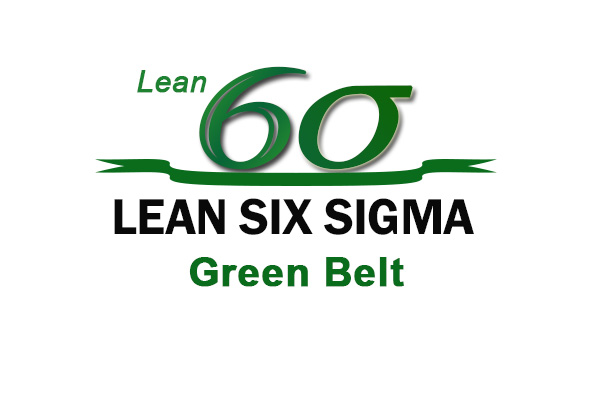
Lean Six Sigma Green Belt Training
This course is to develop a comprehensive set of skills that will allow you to function effectively as a Six Sigma Green Belt.
LEARNING OBJECTIVES
This course is to develop a comprehensive set of skills that will allow you to function effectively as a Six Sigma Green Belt. The Green Belt body of knowledge includes techniques for both quantitative and non-quantitative analysis, as well as the team leadership skills necessary to get projects across the goal line.
COURSE OUTLINE
Introduction Module
• Business need for Lean six sigma
• Understanding Lean and Six Sigma
• Six Sigma fundamentals, methodology (DMAIC & DFSS)
• Goal of Lean & six sigma, Types of six sigma belts
• Project selection
Define Module
• Define Introduction, Roadmap, Voice of customer (VOC)
• Kano Model
• CTQ (Critical to Quality), CTQ drill down
• Quality function deployment, SIPOC.
• Project Planning, Project Charter, Gantt Chart, Project team
• ARMI, GRPI
• Quality function deployment (QFD)
Measure Module
• Measure Introduction, Roadmap, Tools & Checklist
• Types of data, Data Collection
• Central Tendency (Mean, Median & Mode)
• Dispersion of Data (Range, Std dev, Var)
• Operational definition
• Specification Limits
• Graphical Statistics for Continuous & Discrete Data
• Sigma Calculation for discrete data-DPMO
• Sigma calculation for continuous data
• MINITAB Introduction
• Different types Sampling technique
• Introduction to normal distribution
• Histogram
• Descriptive statistics
• Measurement System Analysis (Gage R&R)
Analyze Modul
• Process map analysis
• Lean 8 wastes Identification
• Cycle Time & Lead Time
• Probability distribution & Normality Test
• Process Capability, Box cox transformation
• Run Chart and stability test
• Box plot analysis, Pareto chart
• Process variations, Cause & effect diagram
• 5-why analysis, scatter diagram
• Special & Common Cause variation
• Correlation and regression
• Brainstorming
• Hypothesis testing Theory
• Hypothesis testing (T-test, Paired T test, F-test, ANOVA etc.)
• Chi-square test
• 2-p Test
Improve Phase
• Improve Introduction, Roadmap & Checklist
• Solution generation technique
• FMEA
• Cost Benefit analysis
• Pilots, Before/After Data Analysis
• Selecting solutions techniques
• Design of Experiments
Control Module
• Control Introduction, Roadmap, Tools, Checklist
• Error Proofing & Poka Yoke
• Statistical Process Control
• Discrete Probability distribution- Binomial & Poisson
• Control Charts - Continuous data
• Control Charts- Discrete data
• Project closure
• Live project Example
• Recap
• Exam
During and after completion of training one can be capable of following
1. Become capable and able to demonstrate cost reduction, On-line time delivery and quality improvement
2. Improve analytical thinking, complex problem solving
3. Learn how to define value for the customer
4. Learn how to measure and improve core business KOI
5. Will go through real life simulation projects and analysis data files and templates
6. Minitab (statistical software) hands on practice during the training
7, Excel based software for practice
8. Ability to drive process thinking to identify and fix opportunities
9. Understand how to measure process capability, stability, flexibility of the processes
